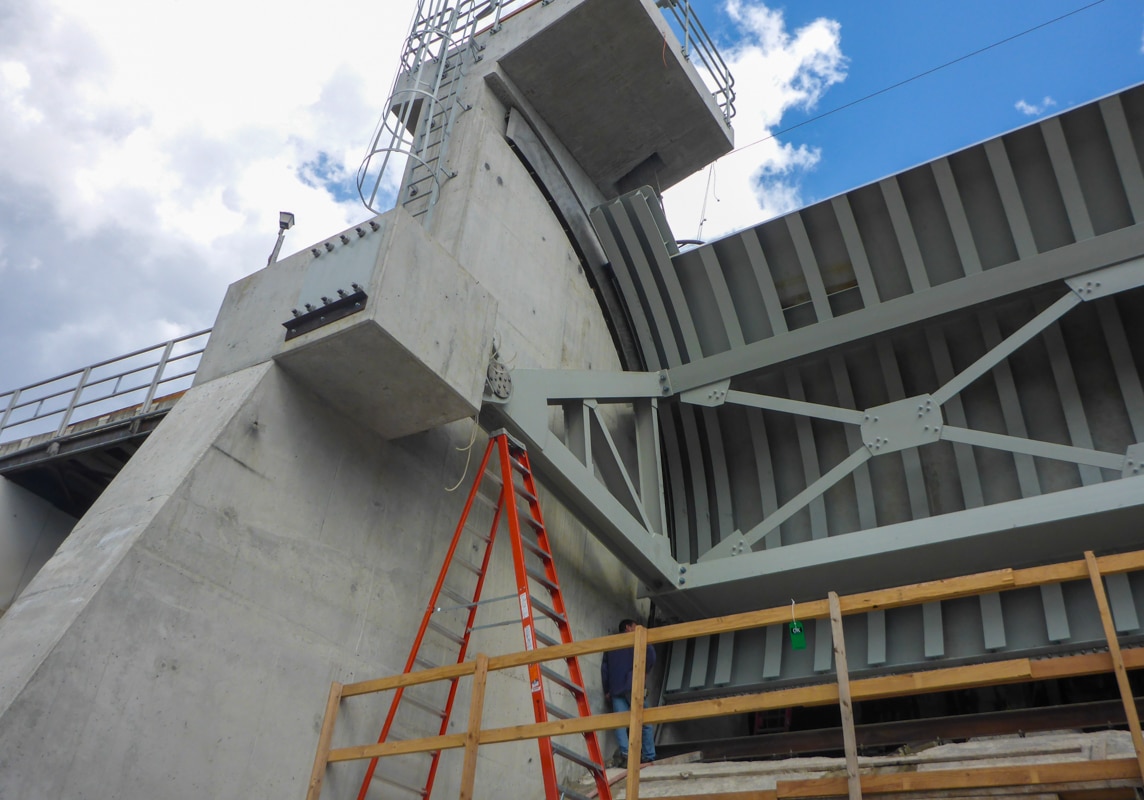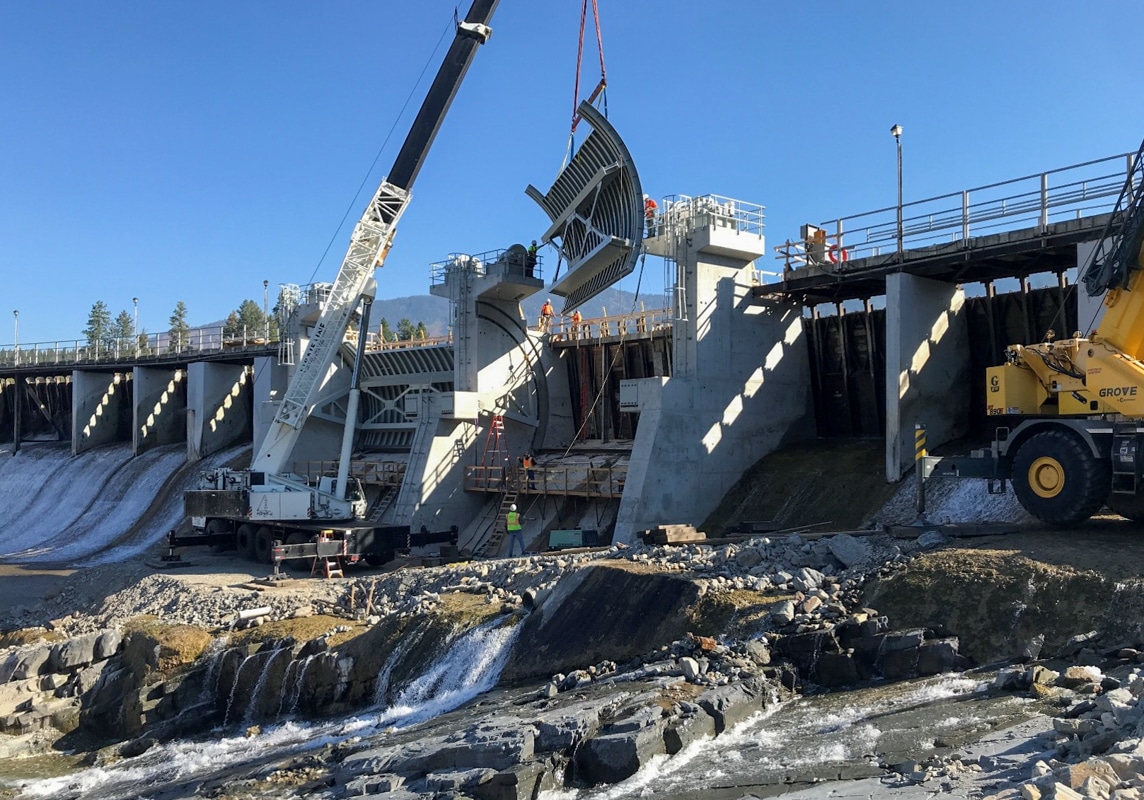
Thompson Falls Radial Gates
Increasing spillway capacity
NorthWestern Energy hired Morrison-Maierle to develop a plan to increase gated spillway flow capacity on the main dam at the Thompson Falls Hydroelectric Project. The FERC-regulated facility is the largest generating hydroelectric plant in NorthWestern Energy’s fleet and is located on the Clark Fork River immediately southwest of Thompson Falls, Montana. The plant has been operating since 1915.
The feasibility study focused on gate alternative options and summarized hydraulic effects, design efficiencies, and construction and lifecycle costs. We analyzed existing bays and designed new abutments to support the new gates and hoist platforms accessed by a new spillway deck walkway.


Services and Highlights
-
Construction materials testing
-
Engineering
-
Feasibility study
-
Structural engineering
Developing the best path forward
Before the project, the main dam spillway had a 913-ft. ogee crest with 34 bays of trippable stanchions and flashboards and two 41 ft x 18 ft. tall radial tainter gates. The selected design consisted of two new 41ft. x 18.5 ft. radial gates complete with hoist assemblies to replace the flashboard system in four existing bays to the left of the existing radial gates.
We developed a detailed procurement package with performance specifications for gate manufacturers. The procurement package allowed the owner to procure the gates and related equipment directly from the manufacturer. It also enabled the gate manufacturers to perform the detailed design of the gate components.
Throughout construction, Morrison-Maierle represented the overall design for regulatory approvals. The structural design of the new concrete pier overlays necessitated the incorporation of all possible load scenarios, including events of very low probability, such as the probable maximum flood loading and extreme ice loads.
Morrison-Maierle represented the design for the FERC Construction Potential Failure Modes Analysis and worked closely with the owner to ensure compliance with all FERC guidelines to achieve authorization for the project from the regulator. We also provided construction administration, inspection, and testing services during the installation of the new radial gates.



Innovative construction sequencing
The construction of this project posed several challenges that are common for dams with hydroelectric generation. However, we were able to come up with innovative solutions to make the work as efficient as possible. The construction site was situated in the middle of the dam, and the bridge across the dam had limited capacity. The owner of the project wanted to maintain generation and minimize shoreline impacts by keeping the reservoir at full pool throughout the construction process.
To achieve these goals, we closely collaborated with NorthWestern’s engineers and operators to develop a design and construction sequence that would enable us to carry out the work while maintaining normal operations of the plant and reservoir. We designed temporary structures to support the loads of the stanchions and flashboards and moved them slightly upstream. We then constructed the reinforcing, forms, and concrete for the new radial gate piers and trunnions downstream of those water-retaining features.
When the new piers were completed and the new radial gates were in place, we removed the temporary features and constructed the new concrete spillway bridge deck over the new gate bays. The design and construction sequencing worked as intended and allowed the owner to de-couple the risk of lost generation revenue and environmental impacts from the construction project.
Learn more about our work with dams and hydroelectric plantsRelated Projects

Holter Dam Spillway Concrete Repair
NorthWestern Energy hired Morrison-Maierle to help with the Holter Dam’s spillway concrete repair. Holter Dam is a 1,364-foot-long and 124-foot-high concrete embankment dam on the Missouri River.

Morony Dam Spillway Modifications
Morrison-Maierle provided procurement specifications for the new gates, hoists, heated guide system, construction sequencing for the spillway and pier modifications, and hoist house enclosure design.

Mystic Intake Gate Replacement
Morrison-Maierle provided an engineering design and construction strategy to replace the intake gate at the Mystic Lake hydroelectric project at the remote Rowe Dam in the Beartooth Mountains.